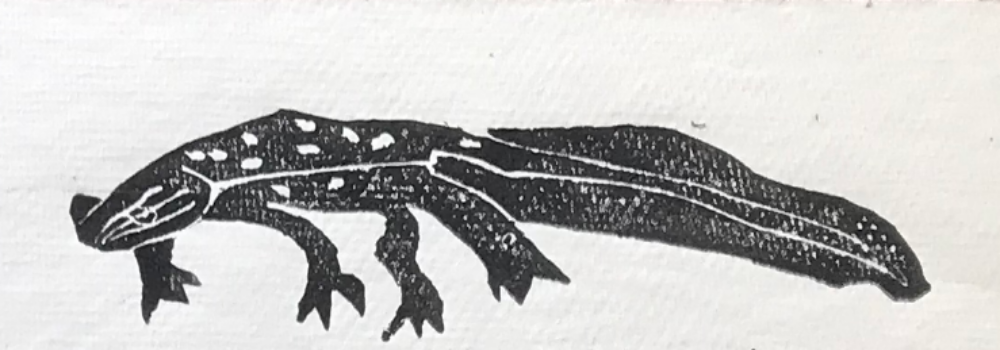By Cooper Peterson
The return of Eastern Indigo Snakes in response to protecting the longleaf pine forests.
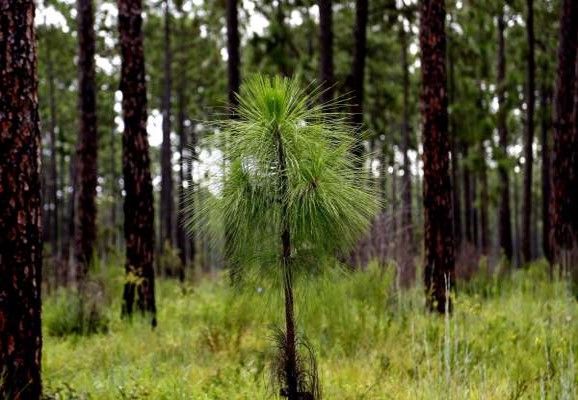
The longleaf pine forest is a unique type of forest throughout the southeastern United States and contains many types of reptiles and amphibians not found in other parts of North America. Following the thawing of the ice age, this type of forest sprung up across the coastal plain and can be found from Virginia to Florida and parts of Texas. Longleaf pine was described as beautiful and bountiful in the mid-sixteenth century by Spaniard explorers and Native Americans. It’s pinewood was key for construction of early colonial settlements such as Jamestown, Virginia.
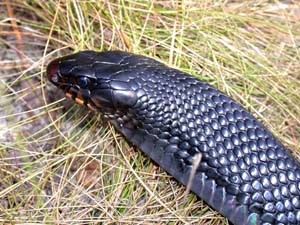
As
more colonies were built up in North America, the longleaf pine was altered by
man. These changes put reptiles such as the eastern indigo snake which live within
at great risk. Wildfire commonly occurs in longleaf pine so that undergrowth
can be cleared out naturally. When humans built towns and cities, they actively
prevented these fires. Therefore, the undergrowth grew up and prevented
reptiles from digging dens and hunting prey as they once did. These alterations
by man became so bad that species such as the eastern indigo snake became
extremely rare; it was thought that this once-common species would become
extinct. But upon closer inspection, there are glimmers of hope nesting in the
undergrowth.
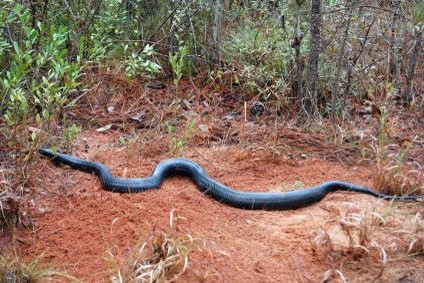
The Eastern Indigo Snake (Drymarchon couperi) is jet-black and glossy blue, a mild-mannered and non-venomous serpent. Eastern Indigos were once a common sight across Alabama, Georgia, Mississippi, and Florida, but in 1978 they were listed as federally threatened. They were one of the first entries into the Federal Endangered Species Act. Captive breeding programs have gained notoriety in Alabama (Conecuh National Forest) as well as in Florida (Apalachicola Bluffs and Ravines Preserve) where history is in the making. From 1976 through 1987 an indigo snake recovery program was held at the Alabama Cooperative Wildlife Research Unit at Auburn University. This program aimed to restock local snake populations by bringing adult snakes from zoos and federal confiscations and breeding them on protected land.
By 1986, a total of 318 snakes were reintroduced via captive breeding programs across sites in Alabama. Despite this, eastern indigo were unable to reproduce in the wild due to poor quality habitats. Yet these programs kept trying; they called for public aid to restore the longleaf pine. Nature reserves that are protected by groups such as the Alabama Cooperative Wildlife Research Unit are managed carefully to maintain healthy, high-quality habitat that can foster species such as the eastern indigo. Strategies such as clear-cutting and controlled burns allow for parts of the longleaf pine to regenerate naturally while not posing risks to nearby human settlements. The Eastern Indigo Snake Reintroduction Project collaborated with private, public, state, and federal parties to preserve National Forests such as Conecuh and reintegrate the eastern indigo. Although Alabama had no eastern indigo sightings since the 1950s, in January of 2020, a wild sub-adult eastern indigo was captured and confirmed to be an offspring of a series reintroductions that occurred from 2000-2010. This find was a pivotal piece of evidence that these programs’ strategies are effective, and that hope is not lost for the longleaf pine nor the eastern indigo snake.
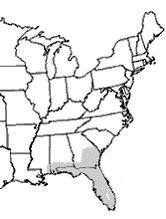
The momentum gained from this successful reintroduction in Alabama’s Conecuh have led to other programs weighing in support to conserve these snakes. The USDA Forest Service, US Fish and Wildlife Service, and Alabama Department of Conservation and Natural Resources implemented federal and state programs to reintroduce species following major preservation of the longleaf pine forests. Other states have joined the programs with success as well. Eastern indigos had not been sighted in Florida since 1982. However Zoo Atlanta, the Tampa Zoo and Central Florida Zoo have joined together with The Orianne Society to reintroduce 12 zoo-reared indigos into Florida’s Apalachicola Bluffs and Ravines nature reserve. Alabama and Florida are the only two reintroduction programs that have had success with eastern indigo snakes and will undoubtably pave the way for further successful programs for this snake in other regions. Despite several decades passing with a once-common snake going unnoticed, it was the collaboration between organizations, federal authorities and the public that permitted the longleaf pine and these snakes to begin flourishing once again.
REFERENCES
An Apex Predator Returns. (n.d.). The Nature Conservancy.Available from https://www.nature.org/en-us/about-us/where-we-work/united-states/florida/stories-in-florida/paradise-regained/ (accessed April 12, 2020).
Eastern Indigo Snake. (n.d.). The Nature Conservancy. Available from https://www.nature.org/en-us/get-involved/how-to-help/animals-we-protect/eastern-indigo-snake/ (accessed April 12, 2020).
Eastern indigo snake makes a comeback in Alabama | US Forest Service. (2019). Available from https://www.fs.usda.gov/inside-fs/delivering-mission/sustain/eastern-indigo-snake-makes-comeback-alabama (accessed April 12, 2020).
Godwin et al. (2011). Reintroduction of the Eastern Indigo Snake (Drymarchon couperi) into Conecuh National Forest. Available from https://www.outdooralabama.com/sites/default/files/Research/SWG%20Reports/SWG%20Indigo%20Final%20Report(2011).pdf (accessed April 12, 2020).
Godwin et al. (2008). Captive Propagation of the Threatened Eastern Indigo Snake for Reintroduction into Alabama. pdf (2008). Available from https://www.outdooralabama.com/sites/default/files/Research/SWG%20Reports/Indigo%20SWG%20final%20report(2008).pdf (accessed April 12, 2020).
